NRAO eNews
Volume 9, Issue 10
17 November 2016
NRAO eNews
Volume 9, Issue 10 • 17 November 2016

Upcoming Events

NRAO Town Hall at the Jan 2017 AAS Meeting
Jan 6, 2017 | Grapevine, TX

ALMA Band 1 Science Workshop
Jan 16 - 18, 2017 | Taipei, Taiwan

ALMA Data Reduction Party
Jan 25 - 27, 2017 | Charlottesville, VA

Women in Astronomy IV: The Many Faces of Women Astronomers
Jun 9 - 11, 2017 | Austin, TX
Women in Astronomy IV
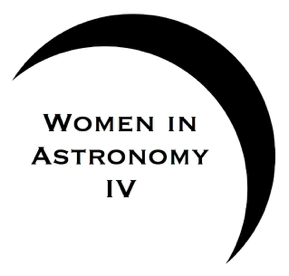
We are pleased to announce Women in Astronomy IV: The Many Faces of Women Astronomers (WiA IV), a conference sponsored by the National Radio Astronomy Observatory (NRAO) and the American Astronomical Society(AAS), with support from the National Science Foundation (NSF). The conference will take place 9-11 June 2017, following the 2017 AAS summer meeting in Austin, Texas.
Through extensive use of workshops, panels, and small group discussions, WiA IV will focus on issues that affect a broad spectrum of women in astronomy. It will address the challenges specific to women and what institutions can do to create welcoming, equitable workplaces. Workshops and breakout sessions will be structured with the aim of producing policy white papers, tool kits, and resource lists.
We encourage interested parties to visit the WiA IV conference website. Please pre-register to indicate your interests and topic preferences and to receive updates about the conference. Responses that arrive by 18 November 2016 will be considered as we finalize the program.
Please help spread the word by circulating this announcement to your departments and networks. Astronomy professionals at all career levels and in all settings are invited to participate. Questions can be addressed to wiaiv@nrao.edu.
We look forward to seeing you at WiA IV!
ALMA Ambassadors Postdoctoral Program
The ALMA Ambassadors Postdoctoral Program provides training and a $10,000 research grant to postdoctoral researchers interested in expanding their ALMA/interferometry expertise and sharing that knowledge with their home institutions through the organization of ALMA Cycle 5 proposal writing workshops.
The North American ALMA Science Center (NAASC) will sponsor a group of selected postdocs to travel to NAASC headquarters in Charlottesville, Virginia for three days in February 2017 to receive in depth training in topics related to ALMA proposal writing – interferometry basics, ALMA science capabilities, recent ALMA headlines, use of the Observing Tool – as well as guidance with speaking on these topics. The postdocs will then return to their home institutions to host a local day-long proposal writing workshop – similar to an abbreviated version of Community Day and NRAO Live! events from previous observing cycles – in February or March in advance of the Cycle 5 ALMA proposal deadline in April 2017.
All talk materials, supplies, and infrastructure for the workshops will be provided by the NAASC. A $10,000 monetary grant is offered in support of the selected postdocs' independent research programs. Postdocs with some radio or sub-millimeter interferometry experience are preferred. Although not required, we will consider multiple postdoctoral applicants from the same institution.
The deadline to apply to the ALMA Ambassadors Postdoctoral Program is 15 December 2016. For more information, please visit the ALMA Ambassadors Postdoctoral Program website or contact Sabrina Stierwalt.
ALMA Data Reduction Party
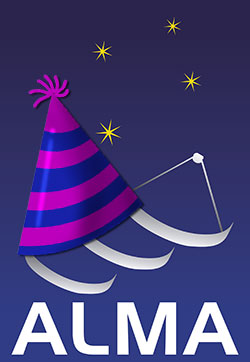
Are you the Principal Investigator (PI) of a successful ALMA project? Have you received a giant, beautiful dataset that you need to get the best science from? You are not alone! Many of us have been or are in this situation, and the North American ALMA Science Center has exactly what you need to figure this out. Join us and your colleagues for a free, three-day ALMA Data Reduction Party that will take place 25-27 January 2017 at the North American ALMA Science Center in sunny Charlottesville, Virginia.
We will provide access to our data reduction cluster, data analysts to prepare your dataset locally, and assistance in understanding the calibration and preliminary imaging that has been done on your dataset. Staff scientists with CASA expertise will also be available to help you decide if you can push the imaging further, if self-calibration will improve your results, and how to display your exciting scientific results. All you need to bring are your laptop, your enthusiasm, and your questions.
Registration for this event is free and travel support will be provided, but space is limited, so sign up early at the ALMA Data Reduction Party website to secure your spot!
See you in January!
ALMA Program News
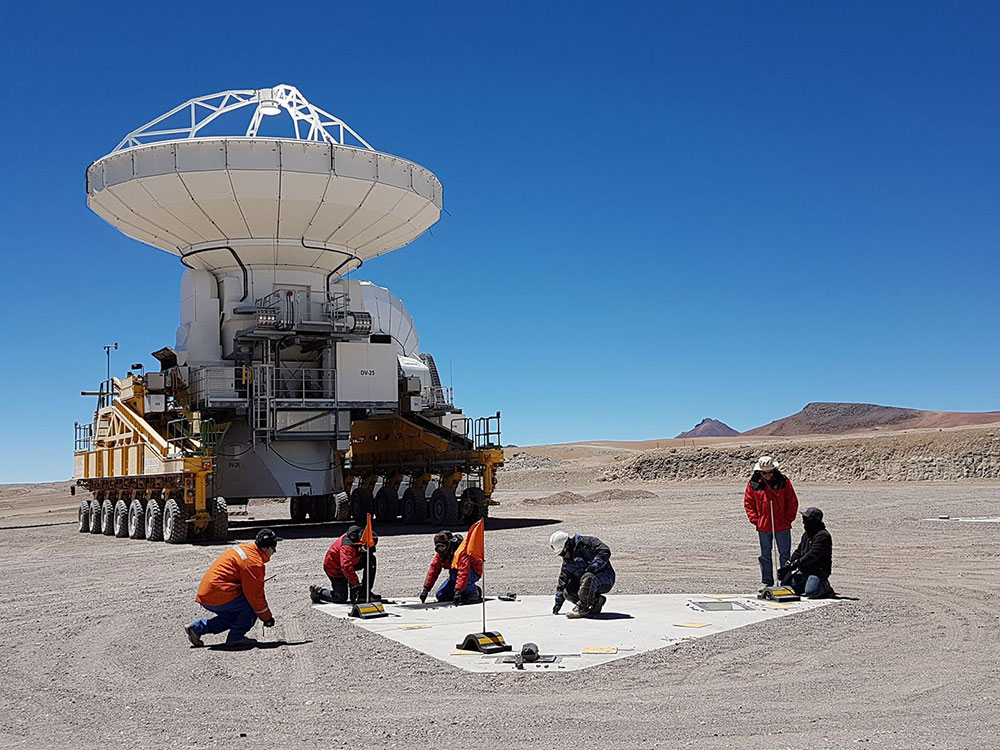
ALMA antenna DV-25 is moved to its new location in configuration C40-4.
[click to enlarge]
ALMA Cycle 4 continues, with the array in its shrinking cycle, now in C40-4 – 0.93 arcsec beam at 100 GHz; 704m longest baseline – as the austral spring progresses toward summer. Good weather remains though less often than in winter, and observations above 400 GHz are being taken. Data processing and delivery is progressing using the Cycle 4 calibration and newly commissioned imaging pipelines; although there is a backlog from Cycle 3 (see ALMA Data Delivery Status Message on the ALMA Science Portal). During Cycle 3, ALMA completed 2600 hours of observing against the announced target of 2100 hours. The successful pipeline effort has resulted in timely delivery of a number of Cycle 4 data packages.
Testing and other preparations for Cycle 5 are progressing well. Decisions will be reached in early December about the implementation of new capabilities for Cycle 5, which will be announced at a later time. The capabilities expected include the implementation of ALMA Band 5 (163-211 GHz), for which the scope of science includes the water line at 183 GHz, and highly redshifted [C II]. A meeting titled Getting Ready for ALMA Band 5 will be held at ESO 1-3 February 2017.
Two other receiver bands await implementation on ALMA. The Band 1 receivers will provide access to the 35-51 GHz frequency window at high angular resolution and sensitivity from the southern hemisphere to complement the capabilities available with the Very Large Array. Implementation of Band 1 is an ALMA development project lead by East Asia as a collaboration of ASIAA, NAOJ, NRAO, and the Universidad de Chile; the first receiver is being tested now at the NRAO Central Development Laboratory. An ALMA Band 1 Science Workshop will be held at ASIAA, Taipei, Taiwan 16-18 January 2017. Deadline for abstract submission is 1 December 2016.
A Call for Proposals for ALMA Development Projects was released 10 October 2016. A detailed description of the process and requirements can be reviewed on the Call for Proposals for Development Projects website. The deadline for proposals will be 30 January 2017. A Coordination Webinar was held 9 November 2016, and the presentations are linked. Those who intend to propose should file a Notice of Intent by 30 November 2016.
Host an NRAO Community Day Event
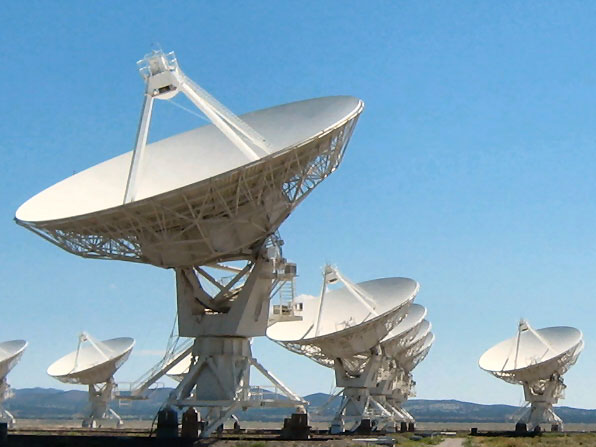
[click to enlarge]
NRAO – New Mexico is pleased to accept applications from universities and other institutes in North America to host a Community Day event between mid-February and mid-September 2017. NRAO Community Days are one to two day events designed in cooperation with host institutions during which NRAO staff give presentations on the capabilities of the Very Large Array (VLA), and tutorials on proposal preparation, observation preparation, and/or data reduction in the Common Astronomy Software Applications (CASA) package.
The Community Day agenda will be largely driven by the goals of the host institution and the expected participants. There will be no cost to your institute. We ask only that you provide a minimum of 12 participants, each of which is expected to bring a modern laptop capable of running CASA; and a sufficiently large meeting room with typical audiovisual capabilities (projector) and Wi-Fi.
To reach this minimum, consider inviting colleagues from other institutes in your area. We strongly recommend each participant register at my.nrao.edu ahead of the event.
To apply to host an NRAO Community Day and for further information, please contact Emmanuel Momjian (emomjian at nrao.edu).
ngVLA Community Studies Approved
As part of the process of building towards a concept for a next generation Very Large Array (ngVLA), the NRAO has launched an ngVLA Community Studies program, allowing members of the scientific and engineering communities to become major contributors to this effort. Twenty-five scientific and technical ngVLA Community Studies have now been approved. Each of these studies will be carried out over the next year to help construct a final design concept to be brought to the Astro2020 Decadal Survey.
All accepted Community Studies efforts are expected to document their findings as part of a peer-refereed journal article or ngVLA Memo, and present their progress/final results at the ngVLA science meeting that will be held in June 2017. Consequently, NRAO will financially support each study at a modest level to help offset travel expenses to present results at the June 2017 ngVLA Science Conference, as well as for page charges from publications that result from the study. NRAO is able to provide funding at a more significant level for ten of the accepted proposal.
Robert L. Brown Outstanding Doctoral Thesis Award
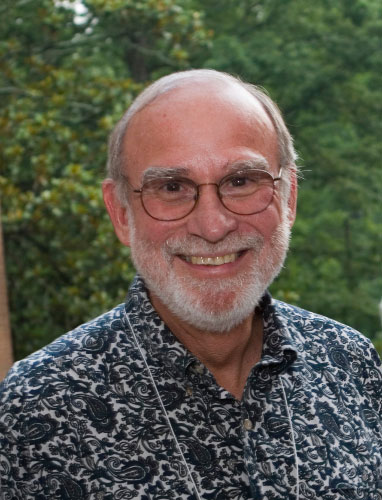
The Robert L. Brown Outstanding Doctoral Dissertation Award is administered by Associated Universities Inc. (AUI) and the National Radio Astronomy Observatory (NRAO) on behalf of Bob Brown’s friends and family to honor Bob’s life and career. The Award is given each year to a recent recipient of a doctoral degree from any recognized degree granting institution in the United States, whose doctoral thesis is substantially based on new observational data obtained at an AUI facility and considered to be of an exceptionally high scientific standard.
Award
The Award is available to degree recipients of any nationality and consists of $1000 USD, a framed certificate, and an invitation to give a colloquium at the NRAO.
Application Guidelines
To be eligible, the applicant must have successfully defended the thesis during the calendar year of the Award. The deadline for receipt of applications and supporting materials for the 2016 Award is 31 December 2016.
Applicants should send an e-mail describing their dissertation, the date of their successful thesis defense, the date of the degree award, and the name and contact information of the primary thesis supervisor to RLBrownAward@nrao.edu.
A copy of the thesis as a pdf file should be sent via e-mail to the same address or made available via a link given in the e-mail. Published papers or papers in press, or portions thereof, based substantially on the dissertation should accompany the application or made available via a link given in the e-mail. Verification of the successful thesis defense and statement that the applicant has successfully completed all university requirements for the Ph.D. should be sent directly by the appropriate university authority to RLBrownAward@nrao.edu.
Selection
The winning applicant will be selected by a committee appointed by the NRAO Director. If, in the opinion of the committee, in any given year none of the theses are sufficiently meritorious, the award will not be given in that year.
Questions should be addressed to RLBrownAward@nrao.edu.
2016 Jansky Lecture
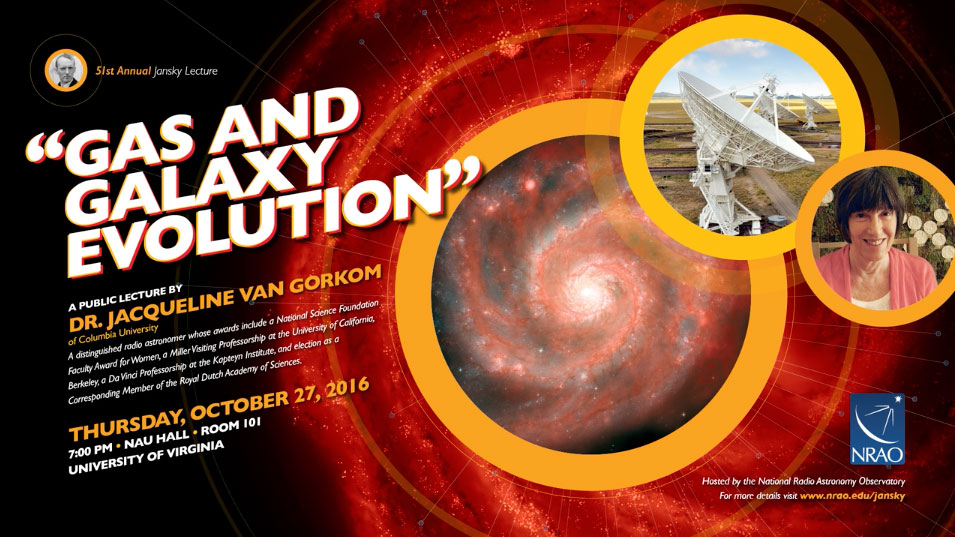
The 2016 Jansky Lecture presented by Professor Jacqueline van Gorkom of Columbia University, Gas and Galaxy Evolution, on 27 October 2016 in Charlottesville, Virginia is now available online.
Recent Media Releases
Career Opportunities
Director for the Central Development Laboratory: The NRAO is actively recruiting a Director for the Central Development Laboratory (CDL). The CDL Director is expected to ensure that the Laboratory will be engaged in R&D essential for the future needs of radio astronomy, working where appropriate in partnership with the astronomy community. The position will be located in Charlottesville, Virginia.
ALMA Post Doctoral Fellowship: The Joint ALMA Observatory (JAO) is actively recruiting Post Doctoral Fellows to join the JAO Department of Science Operations. The ALMA Post Doctoral fellows are expected to support ALMA science operations and will work in the JAO Department of Science Operations (DSO). They will perform their duties as part of the large team of international scientists working at the JAO and in the ALMA Regional Centers. The position will be based in Santiago, Chile.
Scientific Writer: The NRAO is actively seeking a Scientific Writer to join the Education and Public Outreach (EPO) Department. The Scientific Writer will work with the Observatory’s scientific and technical staff to identify and creatively communicate significant observatory science and technical topics via the EPO website and other means. The position will be based in Charlottesville, Virginia.
Assistant/Associate Scientist (open rank): The NRAO is actively seeking Assistant/Associate Scientist(s) to work for the North American ALMA Regional Center (NA ARC), the science operations division of North American ALMA. The NA ARC supports the North American astronomical community in using ALMA, and provides scientific support for the operations of the Joint ALMA Observatory (JAO) in Chile, in collaboration with the ALMA international partners. The NRAO is seeking several qualified candidates to work with and lead teams within the NA ARC. Currently, there are four teams within the NA ARC: Telescope Interface and Diagnostics, ALMA Software Support & Testing, Science Community Interface, and Science Data Services and Archive. The staff scientists recruited for these positions are expected to facilitate and enable cutting-edge science by community members and to work to enhance the observing capabilities for ALMA. Appointments will be in residence in Charlottesville, Virginia or potentially other NRAO locations.
From the Archives
Ellen Bouton

[click to enlarge]
About this month's photo: Sixty years ago, on 17 November 1956, Lloyd Berkner of Associated Universities, Inc. (AUI) and Alan Waterman of the National Science Foundation (NSF) signed the NSF/AUI agreement establishing the National Radio Astronomy Observatory (NRAO) with AUI as the managing agency. In this NSF photograph, Berkner (left) and Waterman (right) sign the agreement, which was a mere 44 pages long, double-spaced and with wide margins. Observing the occasion are (left to right): Lee Anna Embrey, Wilson F. Harwood, James M. Mitchell, Franklin J. Callendar, C.E. Sunderlin, Charles B. Ruttenberg, and William J. Hoff.
Discussions about the need for a national facility for radio astronomy had been ongoing for several years, and by the time the agreement was actually signed, there had been a successful site search as well as considerable correspondence on the proposed organization and guidelines for the future observatory. There had also been heated discussion, in strongly but nevertheless decorously worded correspondence, about the size and design of the first antenna and whether it should be an altitude - azimuth or an equatorial mount instrument. Most of the early planning documents, reports, and correspondence have been scanned and may be read by following the links in the NRAO Founding and Organization Series in the NRAO Archives Finding Aid to the Records of NRAO.
From the Archives is an ongoing series illustrating NRAO and U.S. radio astronomy history via images selected from our collections of individuals' and institutional papers. If readers have images they believe would be of interest to the Archives, please contact Ellen Bouton.

